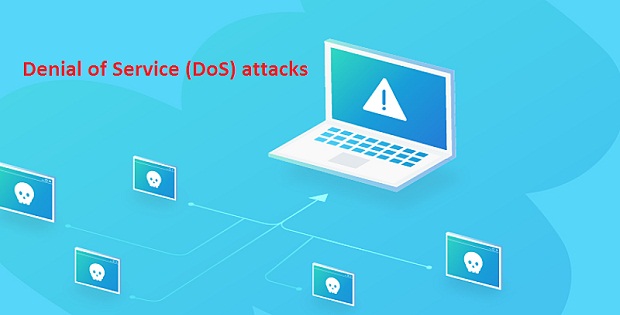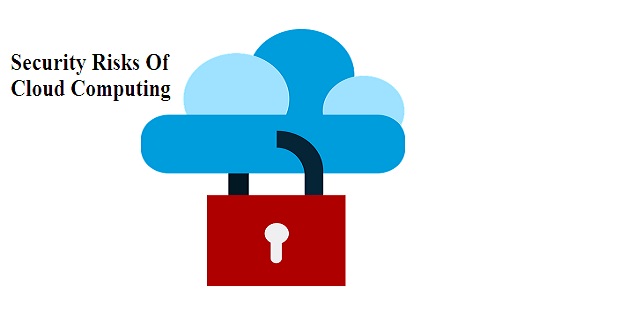What are the Security Risks of Cloud Computing?
Last Updated on 9 months by Touhid
Cloud computing is a technology which provides the various facilities such as flexibility, storage capacity, mobility, cost savings, high speed, backup and recovery. In this post, we will focus on “what are the security risks of cloud computing”. In cloud computing, there are some disadvantages also such as downtime, depends on internet connection, bandwidth, limited control and security risk.
Table of Contents
What are the Security Risks of Cloud Computing?
Cloud computing services are an essential part of today’s business. Many organizations are taking the benefits of cloud computing services. Although, there are some security risks of cloud computing services but it is still the outstanding solution for most of the organizations or individuals. Here we have mentioned “What are the security risks of cloud computing”, which are as follows:
- Data Loss Security Risk
- Denial of Service (DoS) attacks
- Social Engineering Attacks
- Account Hijacking Risk
- Data Breach Security Risks
- Weak Password Risk
- Insider Threat
- Malware infections
- Insecure APIs
- Shared Cloud Computing Services
1. Data Loss Security Risk
What are the security risks of cloud computing? Data loss is one of the most common security risks of cloud computing service. Data loss means data is being deleted, losing file, corrupted and unreadable to humans or user.
It is a process or event which can be intentional or unintentional destruction of data. Data loss can be happening from outside of an organization or within the organization by unauthorized people or software or hardware.
However, here are the most common reasons of data loss are as follows:
- Human error
- Software corruption
- Malware infection
- Computer viruses
- Hardware failure
In a cloud computing platform, data loss occurs in different ways such as lost backup copy, crashes web servers, software is not updated, malicious action, user error and unintentional deletion.
In order to protect from data loss, you may use a strong API between the cloud service provider and client, encryption technology and can take regular data backup.
2. Denial of Service (DoS) Attacks
Denials of Service (DoS) attacks are one of the major security issues in cloud computing system. DoS attacks occur when the system receives too much traffic to shut down a web server or network or make the resources are unavailable to its intended users.
In cloud computing services, a DoS attack compromises the availability of the cloud resources, services, servers, and networks. Here, resources and services are unavailable for its normal usages over period of time.
It is noted that, cloud service is more vulnerable to DoS attacks, because the resources are shared by multiple users. Cloud service providers may use the following tools and techniques to protect from DoS attacks:
- Use a Web Application Firewall.
- Secure Network Infrastructure
- Monitor the Web Traffic
- Increase the Bandwidth
Here is the lists of most used Web Application Firewalls:
- Fortinet FortiWeb
- Citrix NetScaler App Firewall
- F5 Advanced WAF
- Radware AppWall
- Symantec WAF
- Barracuda WAF
- Imperva WAF
- Sophos XG Firewall
- SonicWallNSa
Learn more about Web Application Firewall (WAF)

3. Social Engineering Security Risk
A malicious user can potentially break into a cloud computing system by using social engineering attacks such as phishing. Phishing is one of the most popular social engineering attacks which used to steal sensitive information such as login credentials and credit card numbers.
Now, cloud-based services are one of the prime targets of phishing attackers. In public cloud service, the URL or domain is known for everyone and the domain can access from anywhere, so an attacker can perform malicious attacks on targeted services. As a result, attacker can gain access of cloud computing services.
Learn more about Phishing Attacks.
4. Account Hijacking Risk
Account hijacking is a common types of security risk of cloud computing in which an individual or organization’s cloud account is hijack by an attacker. The account can be financial account, e-mail account, or social media account.
In account hijacking, attackers use different types of techniques to gain access of victim’s accounts such as phishing emails, spoofing emails, password cracking or others types of hacking techniques.
In order to protect from account hijacking security risks, you may follow the following tips:
- Use strong password and change regularly
- Enable multi factor authentication
- Update the operating system and software
- Limit the physical access to the servers
- Make sure data is securely backed up
- Encrypt the sensitive information
- Aware about phishing email
5. Data Breach Security Risk
What are the security risks of cloud computing? Already we have discussed different types of security risks of cloud computing, now we will discuss on most common types of security risks of cloud computing system which is data breach.
Data breach occurs when an attacker gain unauthorized access of cloud application, and then the attacker can view, copy, steal and transmit of business data. It can damage a company’s reputation and brand which may impact on company’s finance as well as market value.
It is also possible to minimize the risk of data breaches in cloud computing system by using the following tips and techniques:
- Keep Up-to-date Security Software
- Encryption technology
- Take Data backup
- Educate/Train Employees
- Develop a cyber security policy
6. Weak Password Risks
Weak password is also a security risk of cloud computing system. You have to create a strong password for your own security which can protect your business data from hacking.
It is noted, that never use simple password which is easy to remember in mind such as mobile no, employee id, DOB, test123.
However, here are some important tips on how to create a strong password:
- The password length should be at least 10 characters long.
- The password should contain uppercase letters (A – Z), lowercase letters (a – z), numbers (0 – 9), and special character (@, #, $, %, ^, (,), &, *!).
Cyber security professionals strongly recommended that use strong password for different account and change the password regularly.

Learn more about How to Create Strong Password
7. Insider Threat Risks
Insider threat is another dangerous security risks of cloud computing. In cloud services, insider threat may be a database administrators (DBA), system engineers, partners, or contractors who have access the data or authorized to manage the data.
Insider threats can steals or damage the organization’s data whether they are receiving money from other companies. Cloud service providers may not be conscious of that matter because of their incapability to supervising their workers.
Cloud service provider can develop a system to alert them when data breaches occur in order to prevent from insider threat.
8. Malware Infection Security Risks
Cloud computing requires internet connection to store the customer data. So, there has a chance to infect malware in cloud system. Nowadays, cloud system is becoming a very popular target of cyber attackers.
In cloud service, if the service provider does not take any preventive measures then virus and malware can infect to applications.
9. Insecure APIs
An application program interface (API) is set of functions and interfaces that allow an application to interact with one another application and access the data. The API is one of the most important elements of cloud services. In cloud service, the API facilitates the end user to interact with a cloud service.
APIs are the most vulnerable threats of cloud computing system. If a software engineer develops an API without proper authentication and encryption technology then that API may be vulnerable.
Typically, the interfaces of an application are completely open to the internet, so cyber-criminal can unauthorized access of the system and data.
10. Shared Cloud Computing Services
Although cloud service vendors provide the best security standards to stores and access the data. But, maximum cloud services vendors does not provide the required security between clients and shared resources.
In cloud computing service, there has an option to shared resources among multiple clients. If a client originates or uploads threats in cloud server then it impacts on cloud service which also impact on other clients.

Tips to Protect Security Risks of Cloud Computing
Already we know that what are the security risks of cloud computing? Now, it is time to protect from security risks in cloud computing. Here we have mentioned some special tips to protect security risks of cloud computing
- Deploy Multi-Factor Authentication (MFA)
- Use secure Application Program Interface (API)
- Install license based Antivirus Software
- Use Firewall application firewall
- Install Anti Malware
- Add Secure Socket Layer (SSL) certificate in your domain
- Keep Operating System Up to Date
- Don’t use free software
- Don’t click on suspicious link
- Encrypt the data
- Monitor and analyze the user activities
- Take backup regularly
Conclusion
Finally, Security risk is one of the major concerns for every organization or individuals. Before hosting your website or application on cloud computing, please ask the cloud service provider about their security measures. How they will protect your application and data?
As a client, you should know what are the security risks of cloud computing and who will be the best cloud service provider for you to protect your data. Hope the article “what are the security risks of cloud computing” will be helpful for you!!
Affiliate Disclosure : Cyberthreatportal is a participant in the Amazon Services LLC Associates Program, an affiliate advertising program designed to provide a means for website owners to earn advertising fees by advertising and linking to amazon.com.





